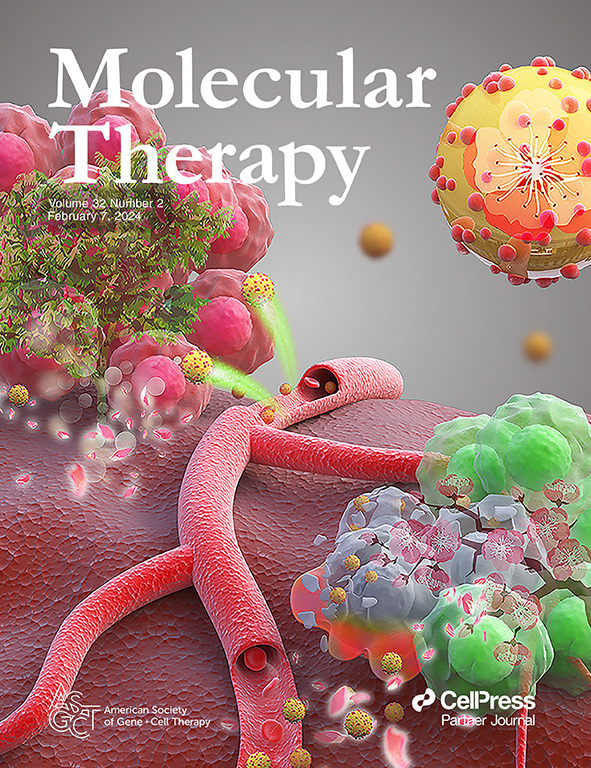探索读透诱导分子2,6-二氨基嘌呤在增强对癌细胞免疫应答中的作用。
IF 12
1区 医学
Q1 BIOTECHNOLOGY & APPLIED MICROBIOLOGY
引用次数: 0
摘要
免疫肿瘤治疗是一种非常有前途的治疗策略,它依赖于癌细胞在其表面呈现特异性抗原表位的能力。由于癌细胞增殖迅速,它们经常积累遗传变异,包括过早终止密码子。在这项研究中,我们研究了2,6-二氨基嘌呤(DAP)的潜力,这是一种有效的翻译读透诱导分子,可引发抗肿瘤免疫反应。经DAP处理后的读透蛋白可以通过主要的组织相容性复合体显示在细胞表面,从而潜在地增强免疫识别。这是通过一个编码萤火虫荧光素酶的结构体来证明的,该结构体被一个UGA终止密码子打断,并在其c端与SL8抗原肽融合。此外,体内暴露于DAP可促进免疫效应细胞(包括T淋巴细胞、巨噬细胞和自然杀伤细胞)向肿瘤微环境募集。这些发现表明,DAP和其他潜在的翻译读透诱导分子有望成为抗肿瘤治疗的新候选药物。本文章由计算机程序翻译,如有差异,请以英文原文为准。
Exploring the role of readthrough-inducing molecule 2,6-diaminopurine to increase immune response against cancer cells.
Immuno-oncotherapy is a highly promising therapeutic strategy that relies on the ability of cancer cells to present specific antigenic epitopes at their surfaces. Because they proliferate rapidly, cancer cells frequently accumulate genetic variants, including premature termination codons. In this study, we investigated the potential of 2,6-diaminopurine (DAP), a potent translational-readthrough-inducing molecule, to elicit an antitumor immune response. Readthrough-resulting proteins following DAP treatment can be displayed at the cell surface by the major histocompatibility complex, thus potentially enhancing immune recognition. This was demonstrated using a construct encoding firefly luciferase interrupted by a UGA stop codon and fused at its C-terminus with the SL8 antigenic peptide. Furthermore, in vivo exposure to DAP promotes recruitment of immune effector cells, including T lymphocytes, macrophages, and natural killer cells, to the tumor microenvironment. These findings suggest that DAP and potentially, other translational readthrough-inducing molecules hold promise as novel candidate drugs for antitumor therapy.
求助全文
通过发布文献求助,成功后即可免费获取论文全文。
去求助
来源期刊

Molecular Therapy
医学-生物工程与应用微生物
CiteScore
19.20
自引率
3.20%
发文量
357
审稿时长
3 months
期刊介绍:
Molecular Therapy is the leading journal for research in gene transfer, vector development, stem cell manipulation, and therapeutic interventions. It covers a broad spectrum of topics including genetic and acquired disease correction, vaccine development, pre-clinical validation, safety/efficacy studies, and clinical trials. With a focus on advancing genetics, medicine, and biotechnology, Molecular Therapy publishes peer-reviewed research, reviews, and commentaries to showcase the latest advancements in the field. With an impressive impact factor of 12.4 in 2022, it continues to attract top-tier contributions.
 求助内容:
求助内容: 应助结果提醒方式:
应助结果提醒方式:


